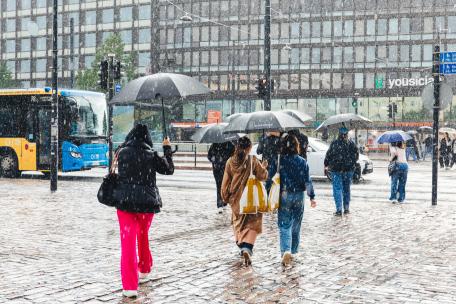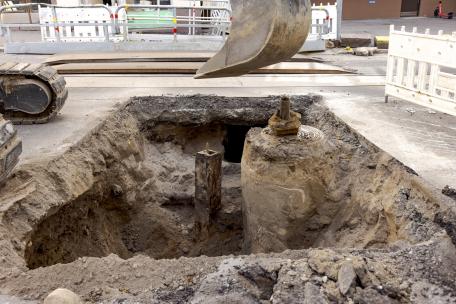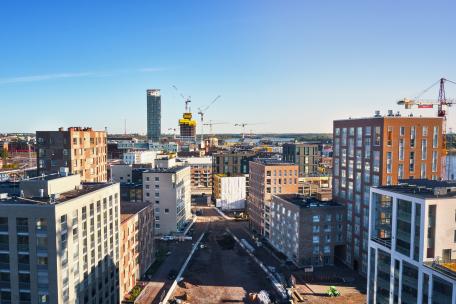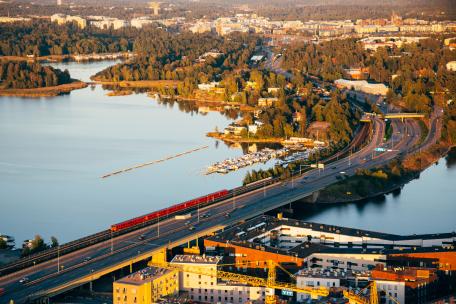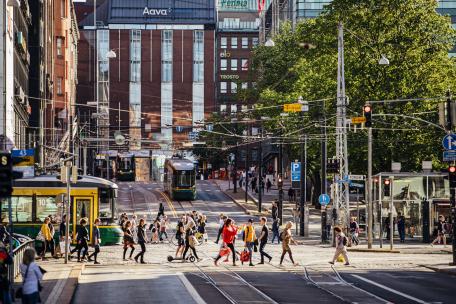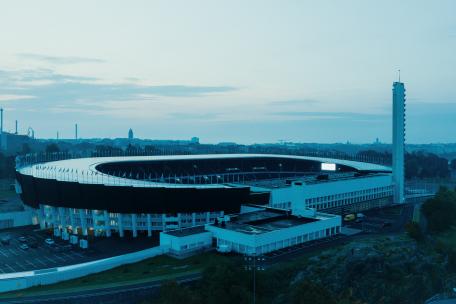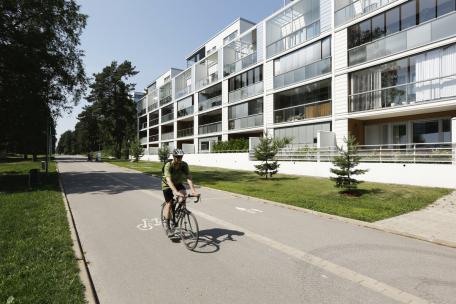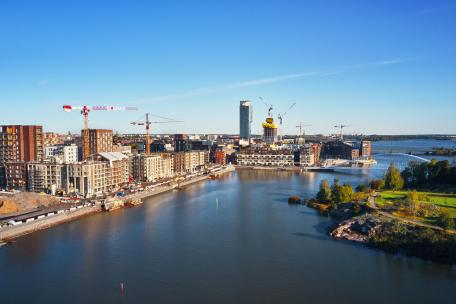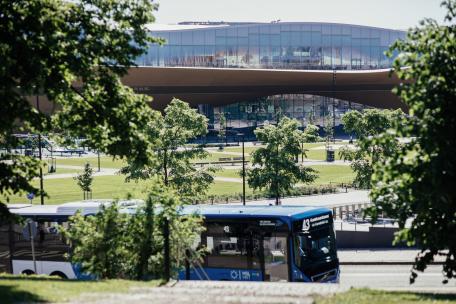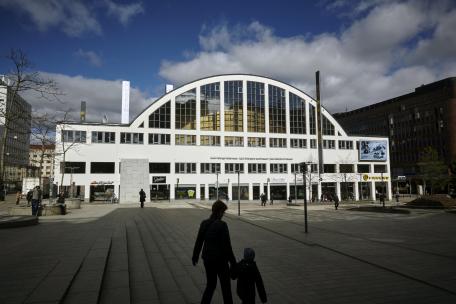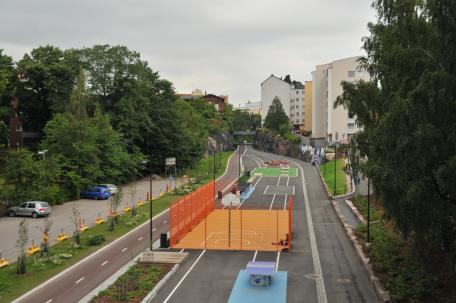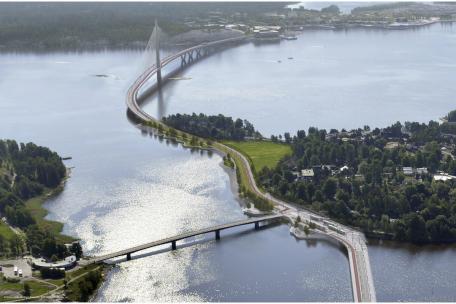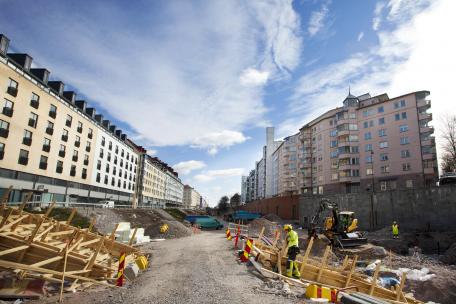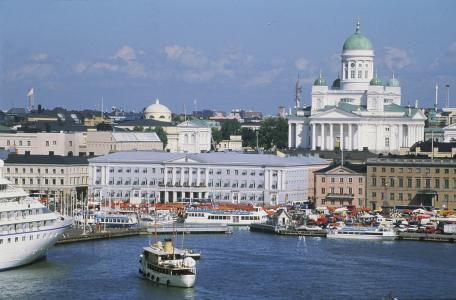Urban Environment Division
Adaptation and preparedness for extreme weather events
Helsinki’s operational preparedness is at a good level, but adaptation and preparedness require changes in land use planning and construction and decisions on the level of preparedness.
Read more about adaptation and preparedness for extreme weather events ›
Implementation of productivity-enhancing reforms
City divisions and enterprises had started the planning and implementation of productivity-enhancing reforms in line with the City Strategy for 2021–2025. The Urban Environment Division and Helsinki City Construction Services Stara had systematically implemented measures in accordance with the productivity-enhancing action plan and achieved desired impacts.
Read more about the implementation of productivity-enhancing reforms ›
Coordination of roadworks and reduction of their negative impacts
The City has taken measures to reduce the negative impacts of roadworks, but these efforts should be continued in the future as well. For now, legislation does not support efforts to reduce the negative impacts of roadworks.
Read more about the coordination of roadworks and reduction of their negative impacts ›
Accessibility of daycare facilities and realisation of pedagogical objectives
The City of Helsinki’s daycare centres can easily be reached on foot or by public transport. The daycare facilities largely provide a good learning environment, but there is a lack of quiet spaces suitable for small groups, according to users.
Read more about the accessibility of daycare facilities and the realisation of pedagogical objectives ›
The effectiveness of recommendations
Measures have been taken on 96% of the recommendations presented in the 2022 assessment report.
Read more about the effectiveness of the recommendations of the 2022 assessment report ›
2024ManagementCityEducation DivisionHelsinki City Transport (HKL)Social Services, Health Care and Rescue Services DivisionCity Executive OfficeUrban Environment DivisionCulture and Leisure DivisionService CentreRescue DepartmentConstruction Services (Stara)Financial Management HelsinkiOccupational Health Helsinki
Meeting binding targets
Fifty-eight per cent of the binding operational targets in the 2023 budget and 60% of their indicators were met.
Read more about the achievement of binding targets ›
The progress of urban renewal
Urban renewal is only just beginning, and so far relatively minor measures have been taken in the areas. However, efforts have been made to promote the objectives of urban renewal.
Read more about the progress of urban renewal ›
Winter maintenance of pedestrian and bicycle paths
The city has not been able to increase the proportion of people satisfied with winter cycling. Measures to improve winter conditions on pedestrian paths are only just beginning. Taking winter maintenance into account in land-use planning solutions would allow for more effective snow management.
Read more about the winter maintenance of pedestrian and bicycle paths ›
The effectiveness of recommendations
Action has been taken on 94% of the recommendations from the 2021 assessment report.
Read more about the effectiveness of the recommendations of the 2021 assessment ›
Efficient use of building assets
The city has developed its building asset management and disposal processes and ownership policies, but these do not yet fully support strategic objectives and service needs. The disposal process for premises has recently been developed, so it remains to be seen what its effects will be.
Read more about the use of building assets ›
The impact of residential planning on green spaces
Residential planning has sought to preserve green spaces and valuable nature sites. However, green spaces have been designated for housing, as land-use planning also pursues its objectives for housing production.
Read more about the impact of residential planning on green spaces ›
Safety in the city’s various areas
The number of crimes committed by young people has remained relatively stable in recent years. However, serious criminal offences against persons committed by young people are on the rise. On the other hand, there has been a marked decline in police alerts for disorderly behaviour and vandalism.
Read more about safety in the city’s various areas ›
Promoting sustainable transport modes
The percentage of sustainable forms of transport has not increased. Promoting walking is very much in its initial stages and operates with limited resources.
Read more about promoting sustainable transport modes ›
Streamlining driving, walking and logistics in Helsinki’s city centre
As set out in its city strategy and various programmes, the city has taken many measures to streamline walking, driving and logistics. However, significant impacts have yet to be seen.
Read more about streamlining driving, walking and logistics in Helsinki’s city centre ›
Resident participation in land-use planning
The opportunities for residents to participate in land-use planning are broader than the legislation requires. Less active groups are activated if necessary.
Read more about resident participation in land-use planning ›
Promotion of biodiversity in forestry
The natural value of the city’s forests have increased in the long term, thanks to the nature management and planned exclusions from the management. The key actions promoting biodiversity were allowing forests to have moulder wood, favouring trees of different species and ages, and excluding sites recognised as important for biodiversity from the nature management.
Read more about promoting biodiversity in forestry ›
Modernisation and refurbishment project of the Olympic Stadium
The costs of the Olympic Stadium modernisation and refurbishment project were almost EUR 127 million higher than estimated in the project plan. Additional and alteration work increased the costs the most. Another reason for the cost overrun is the fact that the costs of the project plan were not tied to the tender price index.
Read more about the Olympic Stadium refurbishment project ›
Preventing segregation of residential areas
Areal segregation has not decreased, although Helsinki has been able to curb segregation through a long-term housing policy aimed at creating a diverse population and housing structure.
Read more about preventing segregation of residential areas ›
Reducing emissions from construction and building use
The Urban Environment Division and Helsinki City Housing Company have taken numerous measures to reduce emissions. In order for the objectives of the Carbon-neutral Helsinki 2035 action plan to be achieved on schedule, a considerable number of energy refurbishments of private housing companies will be required.
Read more about the measures to reduce emissions from construction and building use ›
Achievement of environmental policy objectives in procurement
The environmental policy objectives set by the City Council in 2012 have not been fully achieved in the City of Helsinki’s procurement. Although environmental criteria have been set in several procurements with significant environmental impact in the past, more extensive development has only begun in recent years with the Carbon-neutral Helsinki 2035 action plan.
Read more about the achievement of environmental policy objectives in procurement ›
Maritime Helsinki
The objectives of the City Strategy have been furthered during this council period of office. Half of the measures planned for the early years of the Maritime Strategy have already been implemented either fully or for the most part.
Read more about the assessment of maritime Helsinki ›
Corporate governance of business premises companies
Corporate governance of business premises companies has for the most part been organised appropriately. However, the assessment found needs for supplementing the corporate governance principles.
Read more about the corporate governance of business premises companies ›
Realisation of participatory budgeting in the Urban Environment Division
The implementation of the Urban Environment Division’s participatory budgeting projects has been successful, despite limited human resources and a tight schedule. However, communication about the progress of the projects and the involvement of residents in the implementation of the projects reached only a small group of residents.
Read more about the assessment of participatory budgeting ›
Realisation of the accessibility policies
The accessibility of the built environment was actively promoted in the 2010s, but there is still a need to increase cooperation with disability associations. The realisation of the accessibility of the built environment according to plan should be ensured.
Read more about Realisation of the accessibility policies
›
Implementation of large-scale traffic projects
Not all large-scale traffic projects of the City have been implemented in such a way that it would be possible for them to stay within the original cost estimate or schedule.
Read more about Implementation of large-scale traffic projects
›
Managing disturbances caused by street construction sites
The City is unable to monitor the great number of worksites to a sufficient degree or intervene in operations efficiently enough in the event of issues. Disturbances caused by street construction sites are assessed by major professional construction operators, but they are only responsible for roughly half of the excavation sites within the city.
Read more about Managing disturbances caused by street construction sites
›
Direction provided to the City divisions by the City Executive Office, mayor and deputy mayors
With the introduction of the new management system and City division model, the controllability of the City organisation has improved. However, control and direction have become more fragmented, and there is a lack of clarity regarding who directs what.
Read more about assessment of the new management system ›
City Executive OfficeFinancial Management HelsinkiCulture and Leisure DivisionOccupational Health HelsinkiService CentreConstruction Services (Stara)
Urban Environment Division
Education DivisionRescue DepartmentSocial Services and Health Care divisionSocial Services, Health Care and Rescue Services DivisionHelsinki City Transport (HKL)
